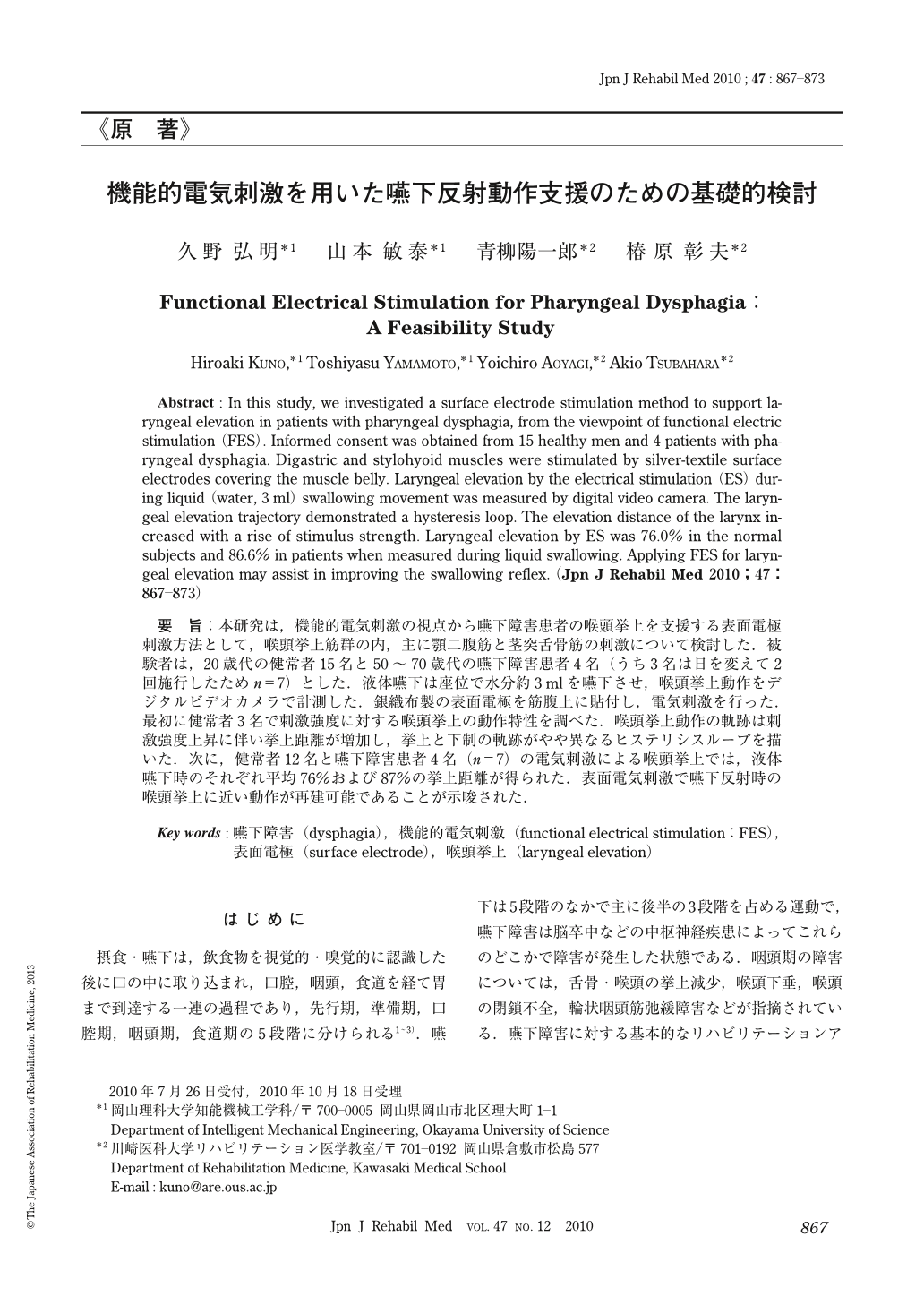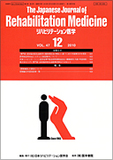Japanese
English
- 販売していません
- Abstract 文献概要
- 1ページ目 Look Inside
- 参考文献 Reference
要旨:本研究は,機能的電気刺激の視点から嚥下障害患者の喉頭挙上を支援する表面電極刺激方法として,喉頭挙上筋群の内,主に顎二腹筋と茎突舌骨筋の刺激について検討した.被験者は,20歳代の健常者15名と50~70歳代の嚥下障害患者4名(うち3名は日を変えて2回施行したためn=7)とした.液体嚥下は座位で水分約3mlを嚥下させ,喉頭挙上動作をデジタルビデオカメラで計測した.銀織布製の表面電極を筋腹上に貼付し,電気刺激を行った.最初に健常者3名で刺激強度に対する喉頭挙上の動作特性を調べた.喉頭挙上動作の軌跡は刺激強度上昇に伴い挙上距離が増加し,挙上と下制の軌跡がやや異なるヒステリシスループを描いた.次に,健常者12名と嚥下障害患者4名(n=7)の電気刺激による喉頭挙上では,液体嚥下時のそれぞれ平均76%および87%の挙上距離が得られた.表面電気刺激で嚥下反射時の喉頭挙上に近い動作が再建可能であることが示唆された.
Abstract : In this study, we investigated a surface electrode stimulation method to support laryngeal elevation in patients with pharyngeal dysphagia, from the viewpoint of functional electric stimulation (FES). Informed consent was obtained from 15 healthy men and 4 patients with pharyngeal dysphagia. Digastric and stylohyoid muscles were stimulated by silver-textile surface electrodes covering the muscle belly. Laryngeal elevation by the electrical stimulation (ES) during liquid (water, 3ml) swallowing movement was measured by digital video camera. The laryngeal elevation trajectory demonstrated a hysteresis loop. The elevation distance of the larynx increased with a rise of stimulus strength. Laryngeal elevation by ES was 76.0% in the normal subjects and 86.6% in patients when measured during liquid swallowing. Applying FES for laryngeal elevation may assist in improving the swallowing reflex.

Copyright © 2010, The Japanese Association of Rehabilitation Medicine. All rights reserved.


